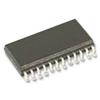AD5263B200: PinoutDescriptionThe AD5263B200 is the industry first quad channel, 256 position,digital potentiometer selectable digital interface. These devices perform the same electronic adjustment function as ...
floor Price/Ceiling Price
- Part Number:
- AD5263B200
- Supply Ability:
- 5000
Price Break
- Qty
- 1~5000
- Unit Price
- Negotiable
- Processing time
- 15 Days
SeekIC Buyer Protection PLUS - newly updated for 2013!
- Escrow Protection.
- Guaranteed refunds.
- Secure payments.
- Learn more >>
Month Sales
268 Transactions
Payment Methods
All payment methods are secure and covered by SeekIC Buyer Protection PLUS.

 AD5263B200 Data Sheet
AD5263B200 Data Sheet








